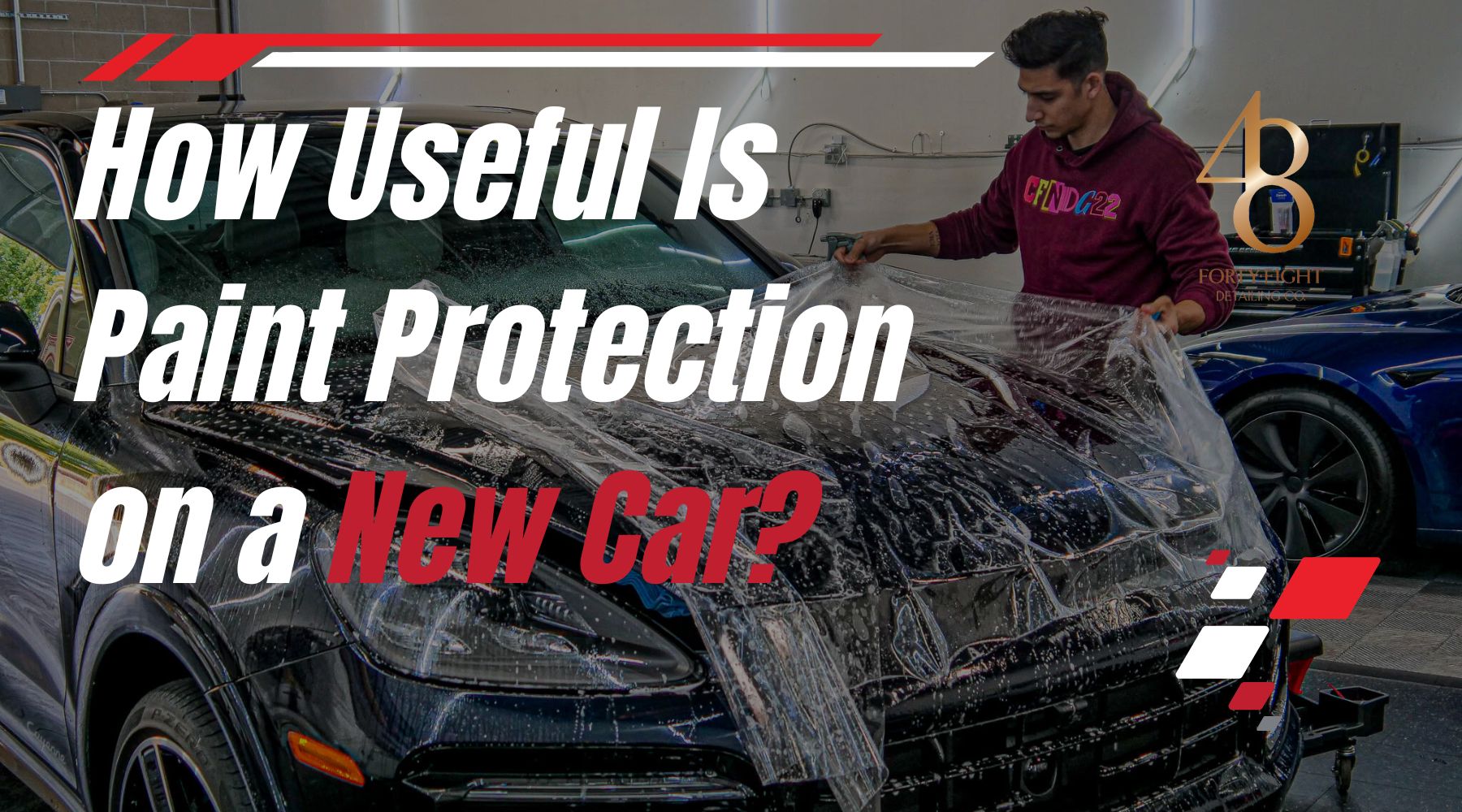When you drive your brand-new ride off the lot, it gleams like a showroom star. But in Surprise, Arizona’s intense sun and dusty roads, that flawless finish faces a gauntlet of hazards from rock chips to UV degradation.
Learning how to protect new car paint is essential for maintaining showroom shine, preventing costly damage, and preserving your vehicle’s resale value.
In this guide, we’ll tap into years of aftermarket expertise to explore professional and DIY options, dive into real-world installation insights, and offer actionable tips for long-term automotive paint care.
Why It's Crucial to Protect New Car Paint
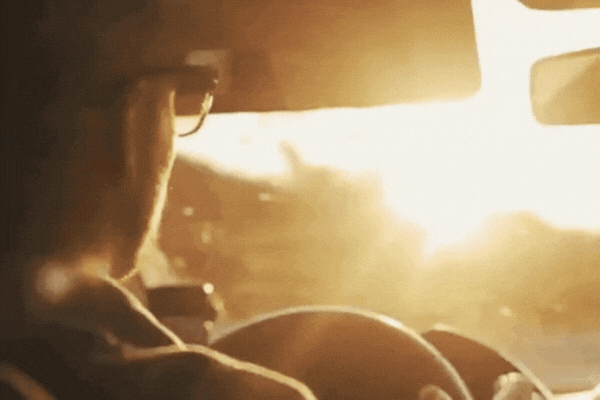
The Arizona Factor
Surprise, AZ sits under a sun that averages 300+ sunny days per year, with UV indices often topping 10. Intense sunlight accelerates clear coat oxidation, leading to dullness and premature fading. Combine that with highway gravel, monsoon-season dust storms, and everyday road debris, and your factory finish faces relentless challenges to its abrasion resistance.
Long-Term Cost Savings
A single stone chip or swirl mark may seem minor, but touch-ups add up. Repainting a bumper can cost between $500 and $1,000. Investing in professional paint protection services now can save you thousands in future paint correction costs.
Compared to repeated DIY spot repairs, a comprehensive protection system delivers superior abrasion resistance and keeps maintenance bills low.
Overview of Paint Protection Options for New Vehicles
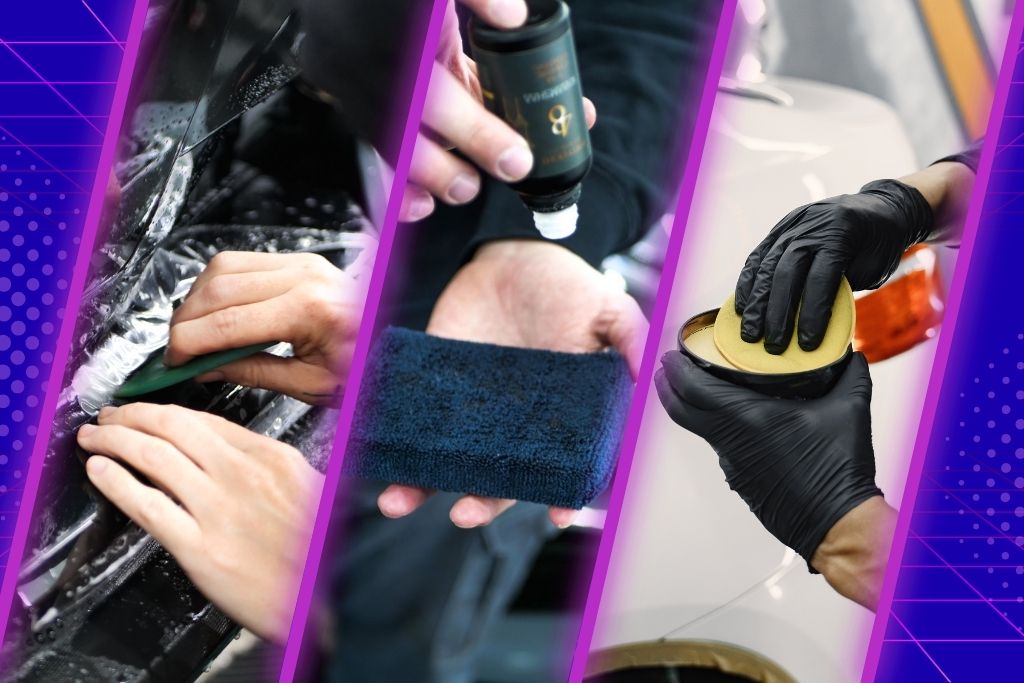
Paint Protection Film (Clear Bra Installation)
Also known as a “clear bra,” PPF is a thermoplastic urethane film bonded to vulnerable areas (hood, fenders, side mirrors). Beyond rock-chip defense, modern films boast self-healing properties that repair light swirl marks with heat exposure, plus a hydrophobic car coating layer for easy cleaning.
Learn more about film lifespan and care for insights on maximizing your investment.
Ceramic Coating for New Vehicles
A chemical bonding process bonds a silica-based layer to your clear coat, providing superior paint surface gloss and UV protection for your car’s paint. Ceramic coatings resist environmental contaminants and reduce water spotting, thanks to hydrophobic car coating properties.
Unlike PPF, coatings do not guard against deep chips but excel at maintaining shine and combating oxidation.
Paint Sealants & Traditional Waxes
For budget-conscious owners, quality sealants bridge the gap between wax and ceramic. The best paint sealants for cars typically last 6–12 months, offering moderate scratch prevention for car paint and allowing for straightforward reapplication.
While wax delivers a glossy finish, it wears off quickly. Sealants, on the other hand, provide longer-lasting gloss and chemical resistance, but still require semiannual upkeep.
DIY Car Paint Protection Kits vs. Professional Paint Protection Services
Retail kits promise quick application, but often skip critical prep such as decontamination and paint correction, leading to adhesion issues and uneven coverage.
Professional installers at 48 Detailing follow rigorous protocols: precision surface cleaning, paint polishing, and climate-controlled film application. This expertise translates to flawless bonds, full warranty coverage, and proper long-term paint protection.
Key Benefits of Protecting Your New Car's Finish
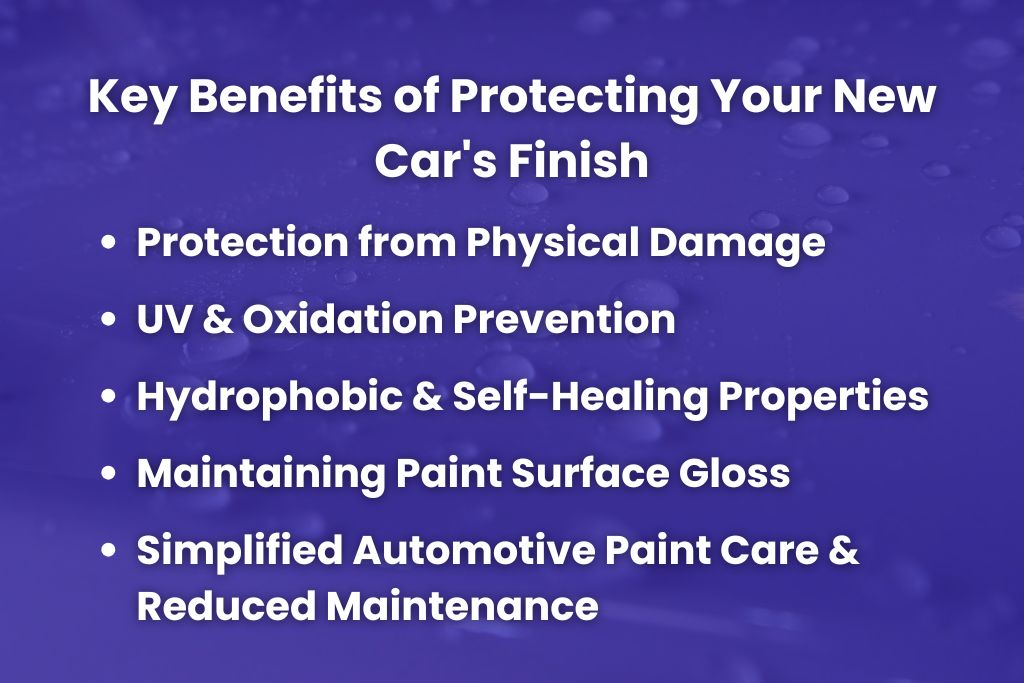
Protection from Physical Damage
A robust PPF deflects rock chips and gravel blasts before they breach your clear coat. Think of it as a sacrificial shield – when minor scratches appear, self-healing properties often make them vanish under sunlight, preserving that showroom sheen.
UV & Oxidation Prevention
Persistent sun exposure breaks down resin bonds in clear coats, leading to chalking and dullness. High-quality films and ceramic barriers offer continuous UV protection for car paint, locking in pigment depth and preventing oxidation from robbing your finish of its luster.
Hydrophobic & Self-Healing Properties
Hydrophobic car coating layers repel water and grime, causing them to bead and roll off, thereby simplifying new car paint maintenance and reducing wash-related swirl marks. Meanwhile, the self-healing nature of premium PPF handles light abrasions sun or heat activates the film’s restorative molecules, smoothing out fine scratches.
Maintaining Paint Surface Gloss
A coated or filmed finish maintains deep, wet-looking shine far longer than unprotected paint. This gloss enhancement not only turns heads but also supports an enhanced resale value, as potential buyers often factor in paint condition when negotiating a price.
Simplified Automotive Paint Care & Reduced Maintenance
With protection in place, you can skip harsh chemical washes and aggressive polishing. Routine rinses and gentle soaps suffice, saving time and effort. Over months and years, that ease of upkeep translates to fewer detailing appointments and lower lifetime maintenance costs.
How to Protect New Car Paint: A Step-by-Step Guide

Timing Is Everything
Why should I apply paint protection immediately after purchase? Straight off the lot, your clear coat is at its pristine best. Applying protection before environmental contaminants bond to the surface ensures optimal adhesion and full coverage, preventing unseen damage from taking hold.
Choosing the Right System for Your Needs
Assess your driving habits and local conditions:
- Daily highway commuter? Prioritize PPF in high-impact zones.
- Weekend cruiser? Ceramic coating may be sufficient for gloss and UV protection.
- Balanced budget? Combine partial PPF (front end) with a mid-tier ceramic sealant.
Decide between bumper-only, full-front, or comprehensive (entire-vehicle) coverage based on your risk tolerance and budget.
Professional Prep & Installation Process
An accurate professional service begins with:
- Paint Correction & Decontamination – removes micro-marring and bonded pollutants.
- Precision Film Application – computer-cut patterns ensure perfect alignment and edge sealing
- Curing & Inspection – a climate-controlled “oven” cures the film, followed by a detailed QA check.
At-Home Maintenance & Reapplication Schedule
How often should I reapply paint protection coatings? Ceramic coatings generally require maintenance boosters every 12–18 months; PPF comes with manufacturer warranties of up to 10 years but benefits from annual inspections. Always use pH-neutral soaps and microfiber towels to avoid swirl mark reduction issues.
Comparing Costs & ROI of Paint Protection Solutions
Thought for a couple of seconds
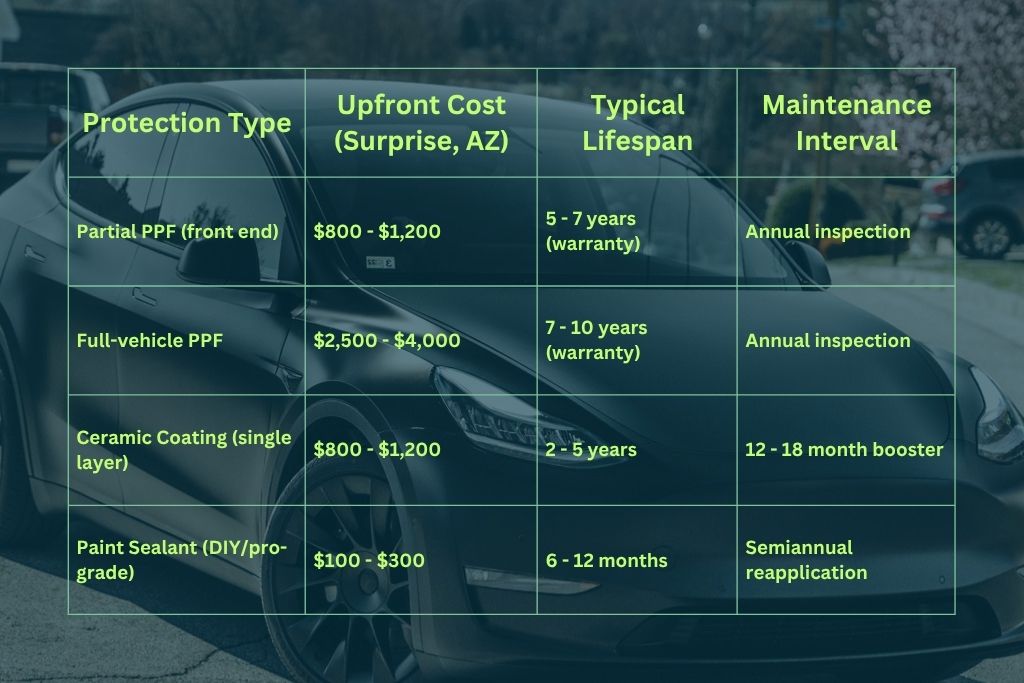
While PPF’s upfront cost is higher, its long-term paint protection and damage mitigation often deliver the best ROI, especially in harsh climates. 48 Detailing’s bundled packages combine PPF and high-performance ceramic to maximize both defense and gloss.
Featured Services at 48 Detailing in Surprise, Arizona
Transparent Bra Paint Protection Film
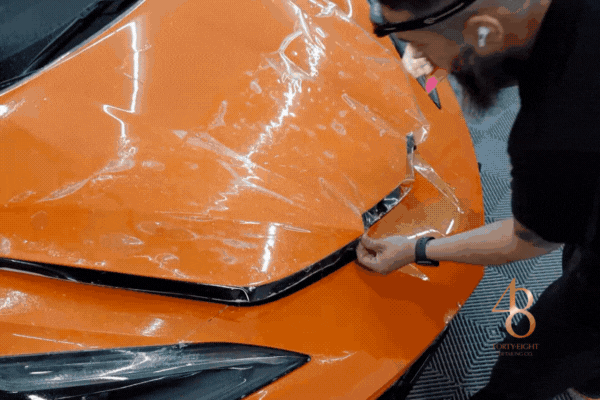
- Premium brands with self-healing topcoats and robust scratch prevention for car paint
- Custom patterns, edge-seal technology, and up to 10-year warranties
High-Performance Ceramic Coatings
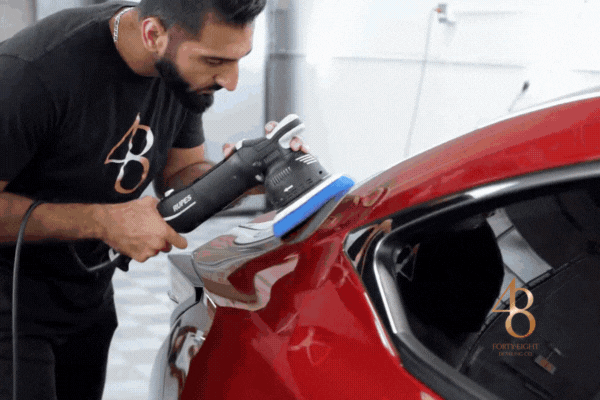
- Multi-layer SiO₂ formulas for unmatched paint sealant longevity and vehicle exterior protection
- Hydrophobic car coating action for effortless washing and swirl mark reduction
Professional Window Tinting
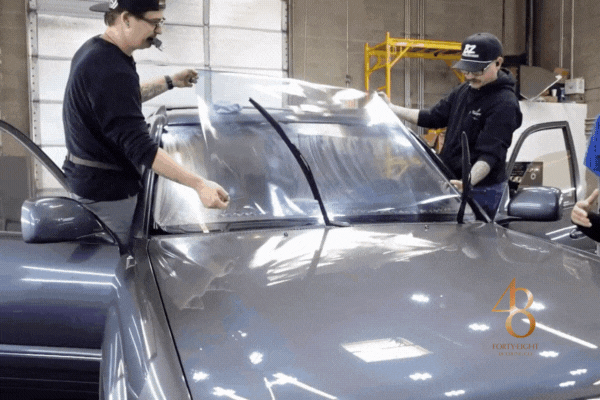
- UV-blocking films that complement paint protection by reducing cabin heat and interior fading
Trust 48 Detailing’s seasoned technicians, who combine meticulous prep, ceramic chemistry expertise, and precision film installation to deliver results that stand up to Surprise’s sun and sand.
Conclusion
In Surprise, Arizona’s harsh climate, knowing how to protect new car paint is more than a nicety—it’s a necessity. From precise bra installation and ceramic coating for new vehicles to paint sealants and professional paint protection services, the right barrier keeps rock chips, UV rays, and swirl marks at bay. By choosing 48 Detailing’s expert team, you secure both immediate peace of mind and enduring value.
Ready to shield your investment with proven protections and exceptional craftsmanship? Schedule your consultation today or explore our Paint Protection Film page to discover package options tailored to your ride and driving habits. Keep that new-car glow lasting for years to come!
FAQ
Why is it essential to protect my new car's paint?
Protecting the finish guards against rock chips, UV-induced fading, and swirl marks. Early intervention ensures the long-term preservation of paint surface gloss and resale value.
What types of paint protection are available for new vehicles?
Options include PPF (precise bra installation), ceramic coatings, and paint sealants/traditional waxes. Each offers different defense levels, from physical impact resistance to hydrophobic and UV-blocking properties.
How long does paint protection film last on a new car?
Reputable PPF carries warranties of 5–10 years. Lifespan hinges on film quality and proper maintenance; annual inspections and gentle cleaning extend durability.
Why choose ceramic coating over traditional wax?
Ceramic coatings form a chemical bond to the clear coat, delivering months to years of protection versus wax’s weeks to months. They excel at UV protection, hydrophobic performance, and chemical resistance.
How much does professional paint protection cost?
In Surprise, partial PPF installations start at around $800, while full-vehicle wraps can cost up to $4,000. Ceramic coatings range from $800 to $1,200, depending on the number of layers and preparation required.
Why does paint protection prevent swirl marks?
Hydrophobic topcoats and self-healing film structures reduce micro-abrasions during washing, minimizing swirl mark formation and maintaining clear coat preservation.
Why is UV protection essential for new car paint?
UV rays break down resin and pigment molecules, leading to oxidation, chalking, and color drift. Protective films and coatings filter UV, keeping OEM finishes vibrant.
Why are DIY paint protection kits less durable than professional options?
DIY kits often lack rigorous surface prep and controlled curing environments. Misapplication can lead to poor adhesion, edge lifting, and patchy coverage, undermining long-term performance.

